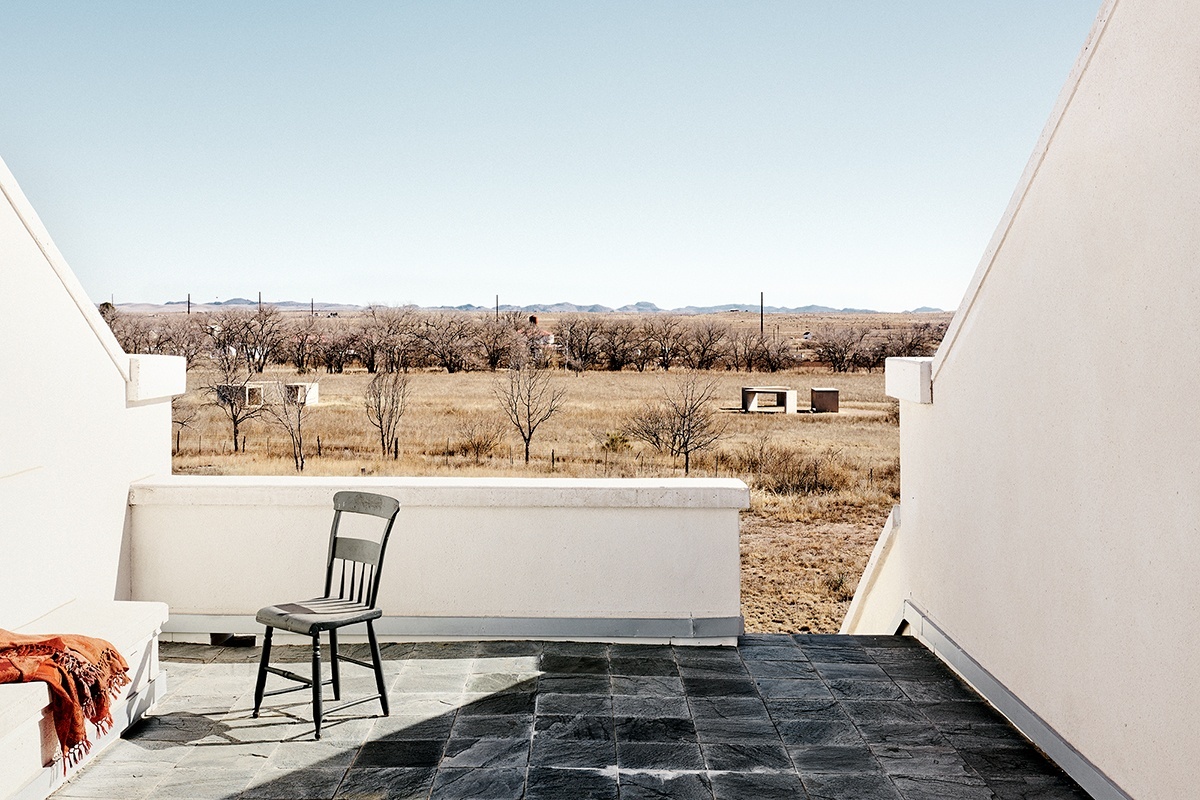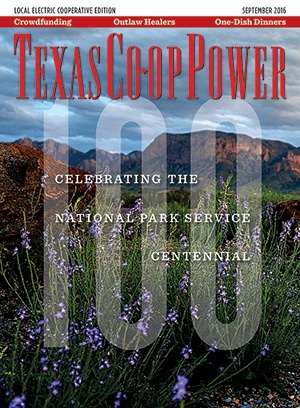In the 1880s, Marfa was just a railroad water stop for Los Angeles-bound trains, but now the town of about 1,980 people—on a plateau between the Davis Mountains and Big Bend National Park—is an international tourist destination. Need proof? The New York Times placed Marfa at No. 48 on its list of 52 Places to Go in 2016.
The Times opines that the oddball mix of Marfa’s eccentric vibe with ultramodern art accounts for the desert town’s appeal. The origin of this bipolar phenomenon lies in minimalist artist Donald Judd’s settling in this dusty ranching town in 1971. Judd was looking for a place to display his stringently exacted art. Marfa’s isolation, the long horizon and the everlasting sky lured Judd to the Trans-Pecos region, but his decision was regarded as the solipsistic quest of an antisocial celebrity. Now Judd is viewed as prescient.
Judd’s lifestyle catalyzed seekers to aspire to live in a desert setting. Today, visitors can immerse themselves so completely in a heady mix of art, music, theater and style that they never want to leave. Many don’t. For these newcomers, that often means buying and renovating houses, an activity at which Judd was exceptionally adept: He bought several buildings downtown, three ranches and the decommissioned Fort D.A. Russell. Judd renovated all of his acquisitions to reflect his rigorous vision. For that reason, he is revered not just as the patron saint of minimalist art but also as the muse of minimalist interiors, architecture and furniture.
That trend is what brought me to Marfa in 2014. Although I was already a frequent visitor, over the past two years I have been working with photographer Casey Dunn on a book that involves photographing houses in Marfa that reflect Judd’s influence. Many of the houses belong to former big-city residents who, like Austinites Linda and Don Shafer, felt compelled to find a way to live here.
It may seem strange that in a far-flung nook of civilization, modern architecture and interior decoration thrive. But Marfa’s status as a center of taste is well-deserved: There are two film festivals, two music festivals, a public radio station, a theater, the Chinati Foundation that Judd founded to showcase large installations by contemporary artists, and a handful of galleries.
“Marfa has so many amenities,” says Linda Shafer, “that you have lots of options. You can choose to enjoy them or ignore them.” The former director of the Software Quality Institute for the Cockrell School of Engineering at the University of Texas at Austin cites a recent evening. She and husband Don strolled down Highland Avenue, Marfa’s main street, from their house on the north side of town to the Crowley Theater a few blocks west to see a one-act play. Other recent offerings at the theater included excerpts from Georges Bizet’s Carmen and a performance by a band from Nigeria. There are low-key options, too, for the times when the Shafers want to ignore the artsy whirl: “Some nights,” she says, “Don and I just sit on our deck and wave at people.”
Waving at passersby might seem like a lame way to spend an evening, but the neighborly activity is at the heart of the town’s charm. For all its aggressively hip art happenings, Marfa has a maddening capacity to look as if nothing is going on. The lack of obvious activity is a welcome respite for over-booked Houstonians and frenetic refugees from Los Angeles. But for the average tourist with the latest hipsters’ guide to West Texas in hand, the indifference to commerce—which often includes inexplicable closures of restaurants and bars—can be disturbing. Exasperated residents of other towns in the area—Marathon, let’s say, or Alpine—snarkily sum up what they see as Marfa’s fickle attitude. “Marfa—By Appointment Only” is an inside joke.
Actually, discovering what’s going on can be achieved by stopping in at local hangouts such as Cochineal restaurant, El Cosmico campground or the Thunderbird Hotel. But the most reliable place to check in is the Marfa Book Company. It’s always been the place where artists, writers, bikers and tourists alight. The bookstore occupies the lobby of the Hotel Saint George, a 55-room boutique hostelry that’s abuzz with wanderers, art exhibits and readings.
In the face of all these tantalizing options, remember that the desert is where you go to clear your mind. That’s where Marfa wows. If all else fails, there’s one pastime that will never let you down, which is why Don likes his station on the deck with Linda: “It’s the iconic view,” the busy executive says, “This is what Texas is supposed to look like.”
——————–
See more of Helen Thompson’s work at seeninhouse.com. Marfa Modern, published by Monacelli Press, will be released October 18.


